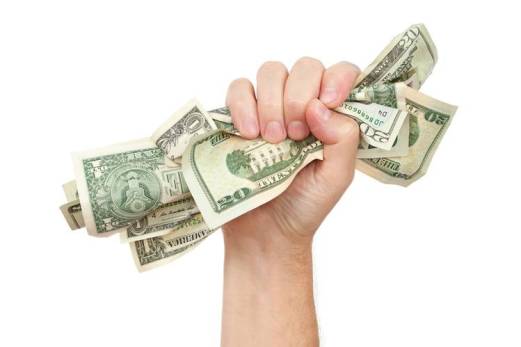
by Charles Brown
The US Federal Reserve hiked interest rates four times in 2018, raising the Federal Funds Rate to 2.5%. This has raised yields on money market funds and Certificates of Deposit which adjust their yields based on changes in interest rates. Many banks have raised the interest that they pay on checking and savings accounts, although the interest rates vary widely depending on which bank you choose.
When looking for the highest yield on your cash balances, it pays to shop around. The yield on a Chase Bank checking account can be found HERE,and is listed at 0.01% as of 4/15/19. The yield on a Capital One Bank checking account can be found HERE, and is currently listed at 1.00% as of 4/15/19.
One percent-plus yields on checking accounts are not super exciting in their own right, but some investors may find them attractive compared to the recent returns from “risk seeking” asset classes. In 2018, the returns on “cash” beat the returns on US stocks, International Stocks and Emerging Market stocks (actual returns are in the footnotes*). But swapping out stocks or bonds for cash can be a very risky proposition as 2019 has shown us – global stocks and US bonds are performing very well so far this year (returns in footnotes**).
Remember that “real” returns are defined as “total return minus the rate of inflation”. Real returns tell us how much of our return we actually get to spend after inflation eats away our purchasing power. According to The Bureau of Labor Statistics the Consumer Price Index (CPI – a measure of inflation) is currently running at 1.9% per year*** (as of 4/15/19). This means that ANY yield on cash that is less than 1.9% is really losing purchasing power adjusted for inflation. In order to maintain purchasing power and grow your investment account on an inflation adjusted basis you will need returns in excess of that 1.9% number.
Bottom line: enjoy the potential for increased interest rates on your bank accounts, but you may need a higher yield in your investment accounts to maintain and grow your purchasing power over time.
* The actual returns on cash in 2018 will depend on where that cash was invested. Returns could have been 0.01% in a checking account to above 1% in a Money Market Fund. As a benchmark, the Vanguard Federal Money Market Fund ($VMFXX) returned 1.78% in 2018. US stocks (S&P 500) returned -4.38% in 2018, International stocks (EAFE) returned -13.79% and Emerging Market stocks (MSCI EM) returned -16.63%. US Bonds (BBrg Barclays Agg) were +0.10% in 2018.
** Year-to-date figures as of 4/12/19 US stocks (S&P 500) +16.67, Intl stock (EAFE) +12.49%, Emerging Markets (MSCI EM) +12.77% and US Bonds (BBrgBarclays Agg) +2.52%. Returns are from Morningstar.com
*** https://www.bls.gov/charts/consumer-price-index/consumer-price-index-by-category-line-chart.htm
****The above article is informational in nature only and is not a recommendation to buy or sell securities. All information is gathered from sources believed to be reliable, but neither Charles Brown nor Ausdal Financial Partners, Inc guarantees the accuracy of the information. All investments carry a degree of risk. Individuals should consult with their tax and investment professionals before making changes to their investment portfolios.
*****Securities and Investment Advisory services offered through Ausdal Financial Partners, Inc, 5187 Utica Ridge Road, Davenport, IA 52807 (563)326-2064. Member: FINRA/SIPC. M.Brown and Associates / M. Brown Financial Advisors and Ausdal Financial Partners are independently owned and operated.
